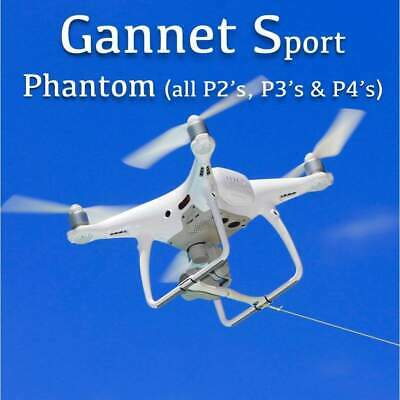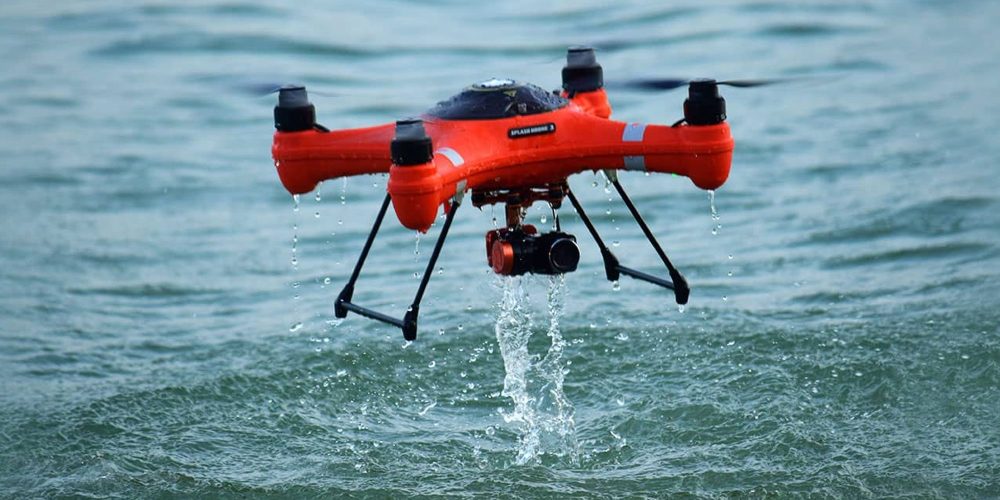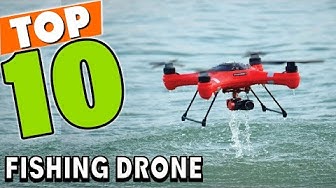
You can use a drone to see the waters surrounding your property if a fisherman is an avid one. Drones are equipped with many features including a GPS positioning and GPS receiver, a GPS transmitter, a GPS receiver, an angle-adjustable camera, and a mechanical payload. You can also buy fishing line that you can use to fish. These lines are highly stable and reliable. The SKY RIGGER drone is one such example.
The drone fishing line SKY RIGGER can be used for spotting fish.
The SKY RIGGER flexible fishing line system allows you to fish from the sky with minimum effort. Two rotating leg clamps can be mounted to any drone model. The release mechanism uses a bayonet connection and a camlock arm. This allows for quick opening of the line clamps. Sky RIGGER is unlike other drones and can be used for all types of fishing.
The SKY RIGGER comes with an automatic release mechanism that allows you to let go of the line when a fish catches your fly. You can also release the line manually with your hand or rod. This feature is available on all models of the SKY RIGGER. It is strongly recommended that you first purchase a Phantom 3 before you purchase the new SKY RIGGER. The following are some pros and con's of the new line:
It has a mechanical payload release
The mechanical payload release is a key feature of a drone. Many of them make it possible for the anglers easy to release the fishing lines. Some models have no release mechanism. Instead, users must "yank the fishing line" to free the drone. This can be an inconvenient process, especially for people who aren't comfortable using their hands to release the line.

Another important feature of the drone's payload release system is its size. When a fish strikes, the payload must be able release the line from the drone. Practice catch and release fishing before you attempt this method. This is because the fish can't be simply pulled to shore and released into the sea. Many people have had good experiences with the DJI Phantom drone. However, the technology is not yet up to the standard of other fishing drones.
It comes with a GPS location system
Rippton, an Australian and Dutch joint venture, specializes in technology-oriented fish products. It was founded to improve the success rate of anglers by creating products that increase the enjoyment of fishing. Rippton's Mobula drone includes a GPS positioning and remote release. The Mobula has the ability to hold bait at surface, provide resistance for kite clips, as well as being environmentally friendly.
It is light at 3 pounds and can take off for 18 minutes. It is also equipped with a high-tech GPS system that allows it to control it from up to 2,000 yards away. It has a range of 1000 meters, or half a mile, and is equipped with intelligent flight modes. Its point feature allows it high-quality images of the surrounding environment. The camera's high resolution allows for great views of fish.
It includes a failsafe safety feature
Aerokontiki's drone fisherman has a failsafe feature. It monitors the battery level, and releases the line when it is needed. In the event of a failure of the battery, it will return to dry ground so that it can continue its mission. It can be operated anywhere with its industrial-grade flight control system. This drone is also waterproof, so you can use it even in the most difficult water spots.

FAQ
Is it safe to fly a drone while driving?
Driving a drone is dangerous, as it could cause an accident or crash into another vehicle. You could also hit pedestrians and animals. Your car could be damaged if it hits power lines or trees.
Can I fly my drone within my local park
Yes, drones are allowed to fly in parks across the globe. Due to safety concerns, certain countries don't allow you to fly drones in parks. You can fly drones legally in these places.
What laws apply to flying drones?
In the United States, the Federal Aviation Administration (FAA) regulates all aspects of drone operations. The FAA must issue a certificate before you can commercially operate a drone. Next, you will need to complete a course in flying skills and pass an exam. Final, you will need to pay a fee.
How can I keep drones from my home?
Drones are becoming more popular for home security and surveillance. To avoid drone attacks, install motion sensors around the property. They will detect any unapproved flying objects.
Are drones permissible at public events
You can fly your drone anywhere you like, provided you adhere to the rules. However, if you plan to fly your drone during a public event such as a parade, festival, or concert, you will need approval from the event organizers.
Are Drones Banned Where?
The FAA has banned drones in areas near airports and stadiums. They are allowed to fly at night by using GPS technology.
Where can a drone be purchased?
Many drones can be purchased online. Some prefer to buy their drones from Amazon, eBay, or Walmart. Others choose to purchase their drones directly from manufacturers.
Statistics
- With the top 10% making over $100/h and the bottom 10% making as low as $10/h. (dronesgator.com)
- According to the multiple listing service (MLS), houses and apartments with drone photographs are up to 68 percent more likely to sell than those without pictures. (thedroneu.com)
- Research and Markets predict a growth rate of 51.1% over the next five years. (thedroneu.com)
External Links
How To
How to Fly Drones with Beginners
A drone is a remotely-controlled aircraft that is used for aerial photography and surveillance. Drones have been in use since World War II. DJI's Phantom quadcopters became commercially available in 2010. From beginner-friendly drones such as Parrot AR Drone 2.0 through professional-grade multirotor craft like DJI Mavic Pro, many types have been available.
There are several ways to fly a drone, including;
-
Remote control – This technique uses a control device attached directly to your hands that allows you steer the drone around its flight path. There are two main types, On/Off switches (like radios) and joysticks.
-
Manual Control - This method uses a smartphone app to remotely control the drone using GPS coordinates. You must keep track of the location where you want the drone to go and follow the instructions from the app.
-
Autonomous Flight – This is when the drone handles all the piloting tasks. It is basically flying autonomously and without human intervention. For the autonomous flight to occur, the drone must have a built-in camera and sensors capable of capturing images and data.
-
Triggered Flight: This is similar in concept to manual control. The pilot manually creates a route and the drone then follows it until it reaches that endpoint. The drone automatically lands once the route has been completed and returns to the base.
-
Landing Gear: Some drones have landing gear that allows them safely to land in case they lose power or run low on battery.
-
Goggles-Some pilots use goggles to protect their eyes from debris during operations.
-
Camera – Some drones have cameras, which allow you to take photos or videos from up high.
-
Obstacles-Some drones come with obstacle avoidance devices that keep them from hitting obstructions.
-
Speed - Drones can reach speeds up to 40 mph.
-
Battery Life: Most drones have a battery life of between 20 and 30 minutes depending on how many power sources you use.
-
Some drones are capable of traveling up to 30 miles depending upon their make and model.
-
Power source - Some drones require an external power source; others work off internal batteries.
-
Weight - Some drones weigh less than 1 pound, whereas other models weigh up to 4 pounds.
-
Size - The size of drones varies from small, easily carried devices to more substantial crafts that weigh in excess of 50 pounds.
-
Price - High-end drones can go for thousands of dollars, while low-cost models start at $100.